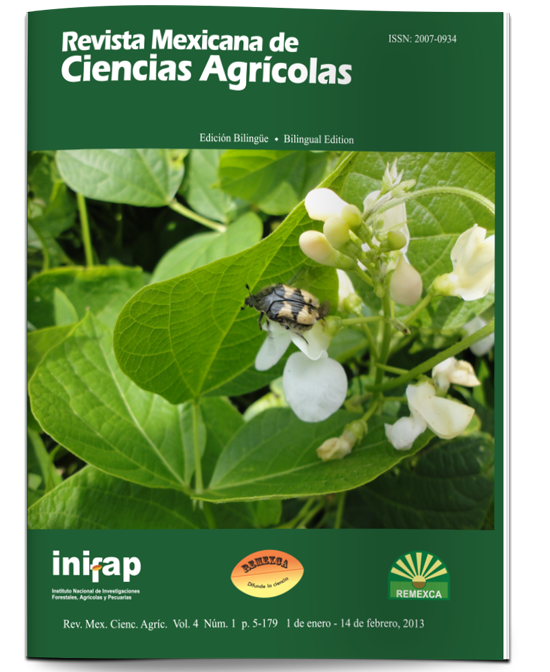Textile sludge effectiveness on the production and chemical composition of tomato fruit
DOI:
https://doi.org/10.29312/remexca.v4i1.1264Keywords:
fertilizer, biosolids, industrial waste, cadmium, nickelAbstract
The aim of this study was to determine the effect of textile sludge applied on a substrate of peat moss and perlite on production and chemical composition of tomato fruit (Solanum lycopersicum). The sludge was characterized with the NOM-004-SEMARNAT-2002 and NOM-021- 2000-RECNAT. Tomato of the variety Río Grande was transplanted into 14 liter plastic-pots with peat moss and perlite (70:30 by volume) in which was added and mixed textile sludge in concentrations of 0, 5, 10, 15 and 20% based on the volume. Nutrition was made with the Steiner solution. The sludge showed characteristics suitable for agricultural use by NOM-004-SEMARNAT-2002. Fruit production was not modified by the application of textile sludge. The concentration of mineral elements in the fruits increased by 0.14% for Na and 15 and 223 mg kg-1 for Zn and Fe, respectively. On the other hand, K decreased by 0.58% as well as for Mn with a value smaller of 22 mg kg-1. The content of N, P, Ca, Mg and Cu showed no significant changes at all. The pH of the fruits do not vary by effect of the treatments, while vitamin C and total soluble solids showed an increase up to 36% and 52%, respectively, in the sludge treatments an effect attributed to the contribution of the sludge ́s soluble salts. There was no evidence of transferring of heavy metals and fecal coliform of the textile sludge to the fruits beyond those permitted by the environmental and health standards. However, we detected the presence of helminth eggs in higher values than those allowed by the standard in the fruits of plants treated with the highest concentration of sludge.
Downloads
Downloads
Published
How to Cite
Issue
Section
License
The authors who publish in Revista Mexicana de Ciencias Agrícolas accept the following conditions:
In accordance with copyright laws, Revista Mexicana de Ciencias Agrícolas recognizes and respects the authors’ moral right and ownership of property rights which will be transferred to the journal for dissemination in open access. Invariably, all the authors have to sign a letter of transfer of property rights and of originality of the article to Instituto Nacional de Investigaciones Forestales, Agrícolas y Pecuarias (INIFAP) [National Institute of Forestry, Agricultural and Livestock Research]. The author(s) must pay a fee for the reception of articles before proceeding to editorial review.
All the texts published by Revista Mexicana de Ciencias Agrícolas —with no exception— are distributed under a Creative Commons License Attribution-NonCommercial 4.0 International (CC BY-NC 4.0), which allows third parties to use the publication as long as the work’s authorship and its first publication in this journal are mentioned.
The author(s) can enter into independent and additional contractual agreements for the nonexclusive distribution of the version of the article published in Revista Mexicana de Ciencias Agrícolas (for example include it into an institutional repository or publish it in a book) as long as it is clearly and explicitly indicated that the work was published for the first time in Revista Mexicana de Ciencias Agrícolas.
For all the above, the authors shall send the Letter-transfer of Property Rights for the first publication duly filled in and signed by the author(s). This form must be sent as a PDF file to: revista_atm@yahoo.com.mx; cienciasagricola@inifap.gob.mx; remexca2017@gmail.
This work is licensed under a Creative Commons Attribution-Noncommercial 4.0 International license.



